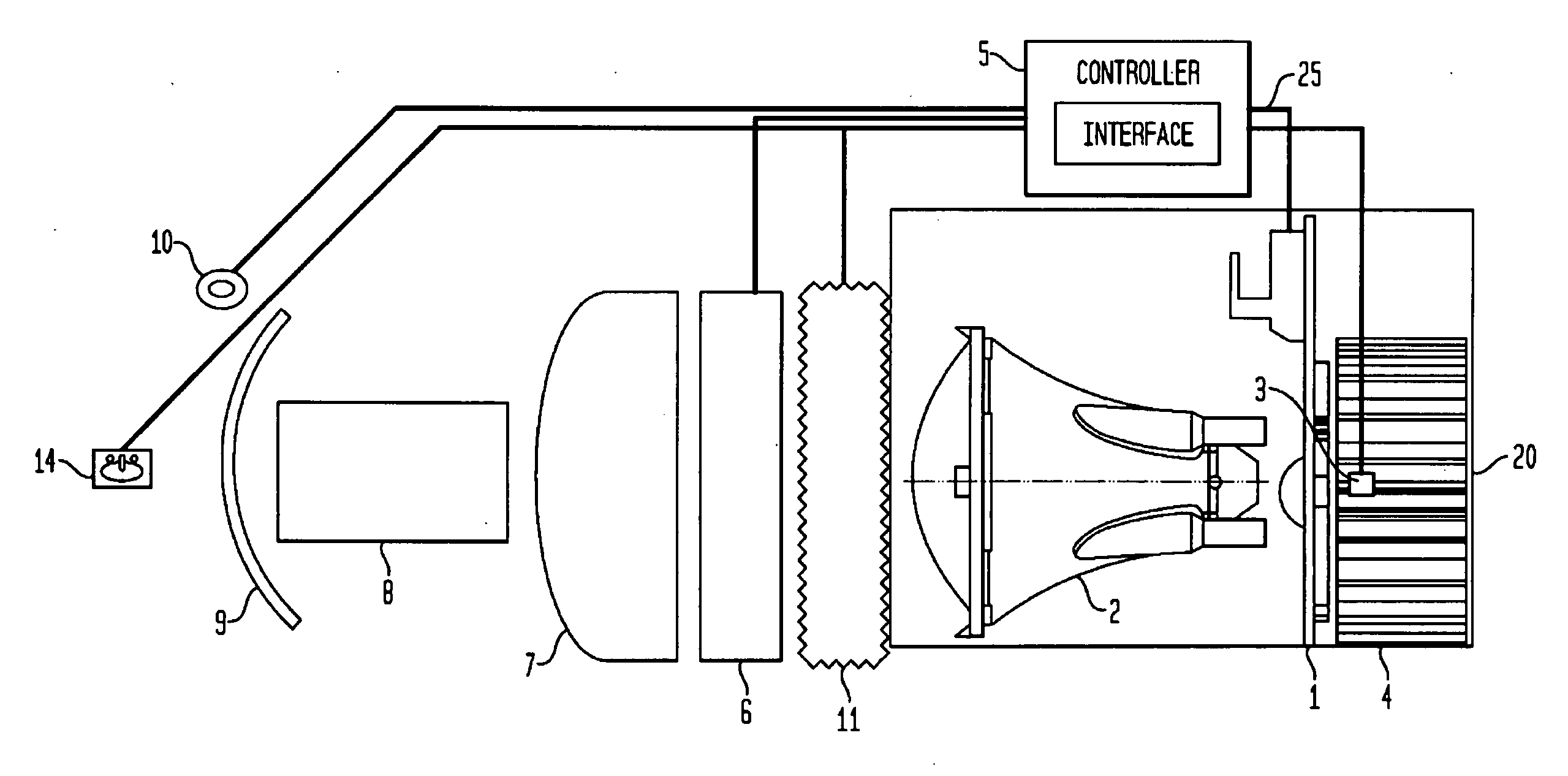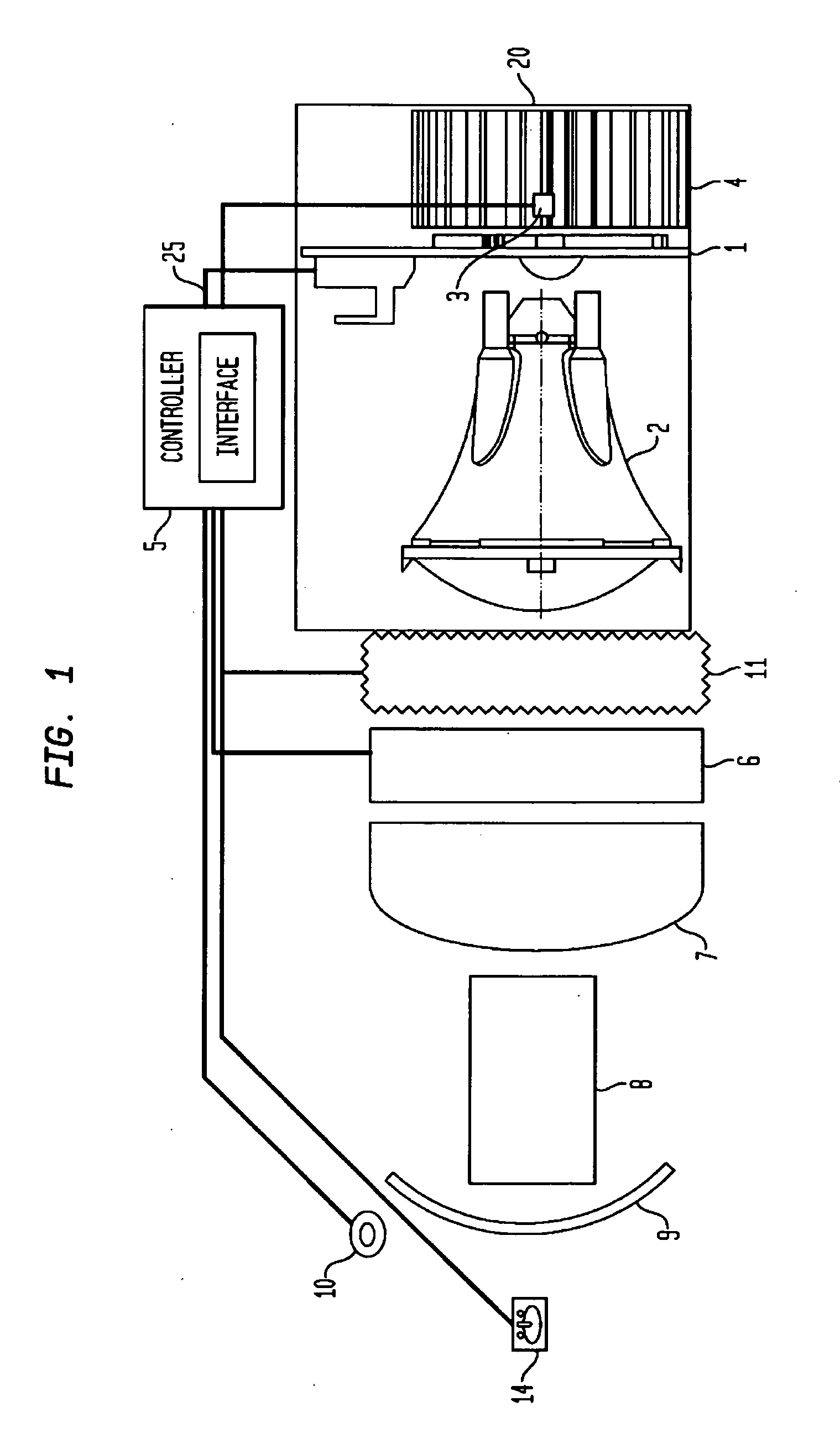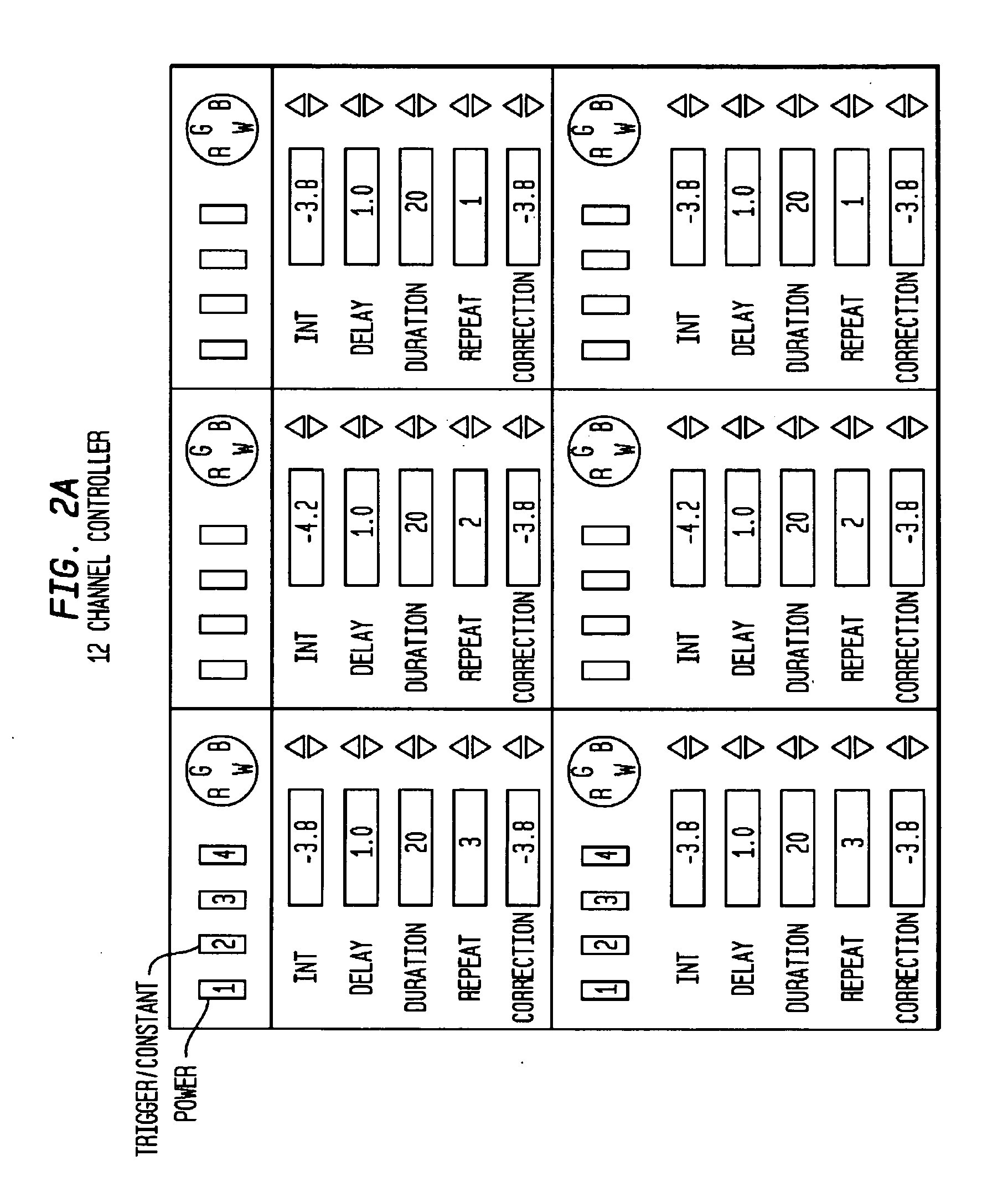LED variable light source
a variable light source and led light technology, applied in the field of light stimulators, can solve the problems of wasting 90% of the power generated by incandescent or arc lamps and the power delivered to each target, and the known instrumentation that includes such visual stimulators for carrying out electroretinograms, electro-oculograms, and other visually evoked examinations is further known to be bulky and expensive, and achieves the effect of low heat emission
- Summary
- Abstract
- Description
- Claims
- Application Information
AI Technical Summary
Benefits of technology
Problems solved by technology
Method used
Image
Examples
Embodiment Construction
[0027]A LED variable light source, visual stimulator including a novel LED variable light source, and method of conducting a retinal examination by use of the novel LED variable light source are set forth and described herein for the purpose of conveying the broad inventive concepts. The drawings and descriptions provided are not meant to limit the scope and spirit of the invention in any way. To that end, reference will now be made in detail to the present invention, examples of which are illustrated in the accompanying drawings, wherein like reference numerals refer to like elements throughout.
[0028]Via a graphics display on the computer monitor or via settings on a controller (controller box), the user sets the values for the light parameters. The term run as used herein represents a sequence of flashes. Each run is triggered by an input TTL pulse. A plurality of independent flashes can be presented in each run. For example, twelve independent LED units can source twelve differen...
PUM
 Login to View More
Login to View More Abstract
Description
Claims
Application Information
 Login to View More
Login to View More - R&D
- Intellectual Property
- Life Sciences
- Materials
- Tech Scout
- Unparalleled Data Quality
- Higher Quality Content
- 60% Fewer Hallucinations
Browse by: Latest US Patents, China's latest patents, Technical Efficacy Thesaurus, Application Domain, Technology Topic, Popular Technical Reports.
© 2025 PatSnap. All rights reserved.Legal|Privacy policy|Modern Slavery Act Transparency Statement|Sitemap|About US| Contact US: help@patsnap.com



